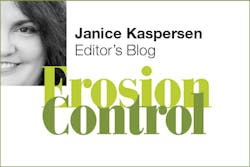
We’ve all seen the images of Paradise, the town that was virtually destroyed by the latest round of wildfires in California. As this article and others have pointed out, many photos of the burned areas often show something surprising: “The buildings are gone, but most of the trees are still standing—many with their leaves or needles intact.”
As fire experts note, although the Camp Fire and the many others throughout the Western states are called wildfires, the main fuel might not be trees or underbrush but rather the buildings right on that wildland-urban interface. As people continue to build homes and neighborhoods in these transitional areas, such fires are likely to be more common.
It looks at this point like the Camp Fire might have been caused by sparks from a power line, and the utility, Pacific Gas & Electric, will probably be held liable for damages. Under California law, utilities are responsible for damage caused by their equipment even if they were not negligent. And yet, as the article also notes, “As more and more people move into wildland-urban zones, these new arrivals will need to be served with electric power. Which means that not only will there be more people living in the zones threatened by wildfires, but more power lines will need to be built, increasing the risk of fires.” PG&E and other utilities can’t charge those customers more for electricity, but the risk of fire and the costs of paying for damages will raise costs for all customers.
“As more people move into vulnerable regions—and then build expensive infrastructure in those areas—the costs of natural disasters increase…. The expanding bull’s-eye means the costs of rebuilding will keep climbing even if the frequency and severity of natural disasters doesn’t change,” the article notes.
We’ve discussed the same sort of dilemma in Stormwater magazine when talking about the many problems facing the National Flood Insurance Program. In the case of fires, the problem is not only the initial destruction but also the ongoing risk from erosion and mudslides that follows each event.
Some have suggested that zoning and other government policies should be designed to discourage people from moving to high-risk areas, whether that risk is from flooding, hurricanes, and coastal erosion or from fire. Do you agree? Do you see other solutions to reduce damages in high-risk areas?
StormCon Call for Speakers Deadline is December 5
StormCon, the conference exclusively for stormwater and surface-water professionals, is seeking abstracts for presentation at StormCon 2019, which will take place in Atlanta, GA, on August 18–22, 2019. The deadline for submitting abstracts is Wednesday, December 5, 2018.
We are accepting abstracts in six conference tracks: Stormwater Infrastructure and Best Management Practices; Green Infrastructure; Stormwater Permit Compliance; Funding, Staffing, and Managing the Stormwater Program; Industrial Stormwater Management; and Research and Testing. For descriptions of the tracks and more information about submitting an abstract, please visit www.StormCon.com.
About the Author
Janice Kaspersen
Janice Kaspersen is the former editor of Erosion Control and Stormwater magazines.